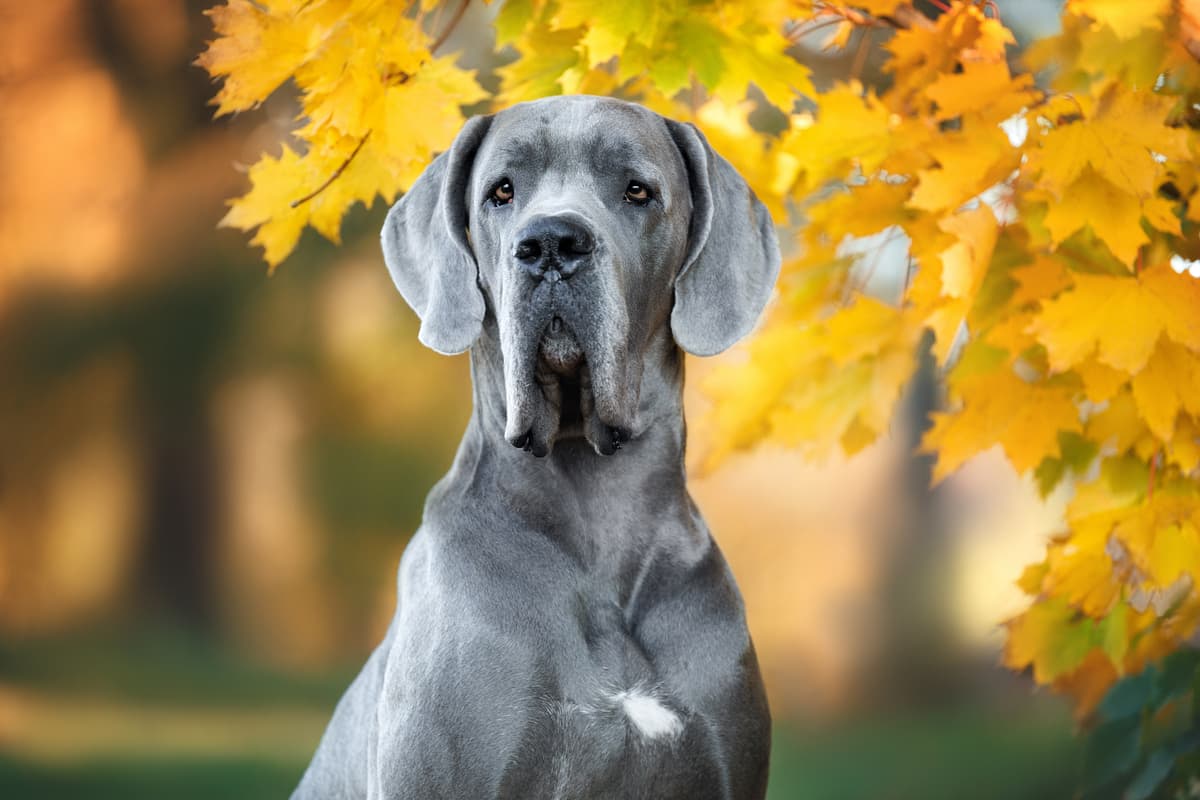Great Dane vs English Bulldog
Discover the differences between Great Dane and English Bulldog to make the best choice for your situation.
Try different breeds

Great Dane
A gentle giant with a commanding presence and affectionate heart, the Great Dane thrives as a loyal family companion. Calm, patient, and friendly, this breed bonds closely with loved ones.

English Bulldog
Stocky, courageous, and affectionate, this breed charms with its wrinkled face and calm nature. Loyal and gentle, it thrives as a loving family companion.
Quick comparison
Large
63–80 kg
Short, smooth
7–10 years
50–63 kg
Moderately active
Medium
23–25 kg
Short, smooth
8–10 years
18–23 kg
Low activity needs
Personality & behavior
Compare the personality traits and behavioral characteristics of both breeds.
Great Dane
Gentle and sociable with people and children
Learns commands quickly and understands routines
Moderate activity needs, enjoys daily walks
Enjoys games and interactive play sessions
Adjusts well to new environments and changes
English Bulldog
Affectionate and gentle with family and children
Learns basic commands with some patience
Prefers lounging over vigorous physical activity
Enjoys play but tires fairly quickly
Adjusts well to most living environments
Care needs
Exercise, grooming, and daily care requirements
Great Dane
Hip dysplasia, cardiomyopathy
English Bulldog
Brachycephalic syndrome, skin fold infections
Suitability
How well each breed fits different living situations and families
Great Dane
Challenging for beginners
Their large size and needs can overwhelm inexperienced owners
Not ideal
Great Danes need space and may struggle in small apartments
Moderately suitable
They enjoy moderate activity but aren’t extremely energetic
Gentle giant
Usually patient and gentle with young children
Generally compatible
Can adapt to other pets with proper introductions
Prone to distress
They dislike being left alone for long periods and may develop anxiety
English Bulldog
Good option
Easygoing, low-maintenance nature suits owners with limited dog experience
Excellent fit
Moderate exercise needs and calm demeanor work well in small living spaces
Not ideal
Low stamina and breathing issues make them unsuited for high-activity lifestyles
Very suitable
Gentle, patient, and tolerant with young children when properly socialized
Usually compatible
Generally sociable but may need guidance with other pets, especially dogs
Not recommended
They struggle with long periods alone and are prone to separation anxiety
Breed strengths
What each breed excels at and their best qualities
Great Dane
- Gentle and affectionate with family
- Loyal and protective instincts
- Generally good with children
- Calm and laid-back indoors
- Low grooming requirements due to short coat
English Bulldog
- Affectionate with family members
- Generally good with children
- Low exercise requirements
- Minimal grooming needs
- Adaptable to apartment living
Challenges & considerations
Potential challenges and considerations for each breed
Great Dane
- Prone to hip and joint issues
- Shorter average lifespan than many breeds
- Requires significant space due to size
- Can be costly to feed and care for
- May develop separation anxiety if left alone
English Bulldog
- Prone to respiratory problems
- High risk of overheating
- Susceptible to skin infections
- Can be stubborn during training
- Tends to drool frequently
Ready to choose your perfect breed?
Learn more about each breed or compare other breeds to find the perfect match for your lifestyle.
Discover more helpful tools
Make use of our other free tools to get the most out of your pet experience
